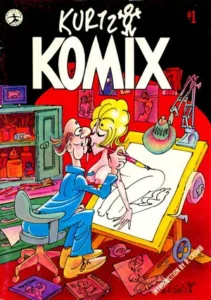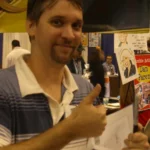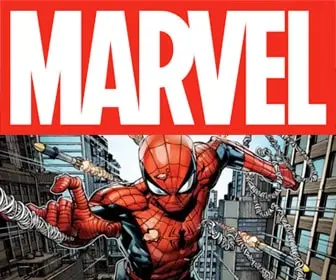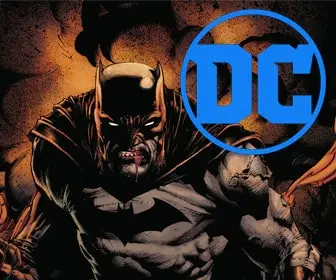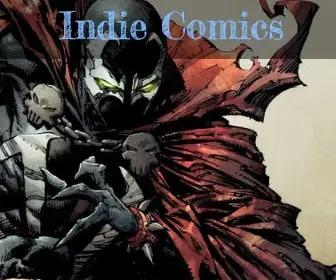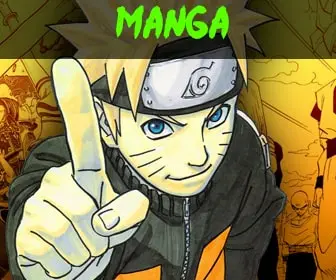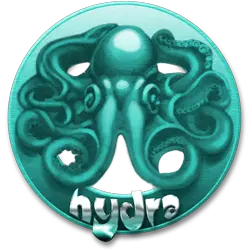
Harvey Kurtzman: The Creator of MAD Magazine & Comic Book Legend
Let’s dive into the amazing world of Harvey Kurtzman! He was a true comic book genius. He changed how people thought about comics. He made them smarter, funnier, and more artistic. You might not know his name right away, but you definitely know his work. He created MAD Magazine! Yes, that MAD Magazine, with Alfred E. Neuman and all the crazy parodies. But Harvey Kurtzman did so much more than just MAD. He was a pioneer. He showed everyone that comics could be serious art, not just silly kid stuff.
Young Harvey: A Creative Spark Ignites
Harvey Kurtzman was born in Brooklyn, New York, in 1924. Even as a kid, he loved to draw. He spent hours sketching, filling notebooks with his ideas. This was before the big superhero boom. Comic strips in newspapers were popular, but comic books as we know them were just starting to take off. Harvey went to the High School of Music and Art in New York City. This was a special school for talented young artists. He learned a lot there. He studied drawing, painting, and design. He got a strong foundation in art. This helped him later when he started making comics. He didn’t just want to draw pretty pictures; he wanted to tell stories. He wanted his drawings to have a purpose.
After high school, Harvey started working in the comic book industry. It was a fast-growing business. Many different companies were making comics. They needed artists and writers. Harvey got a job at a company called MLJ Comics. This was the company that later became Archie Comics. He worked on a bunch of different titles. He drew adventure stories, funny animal comics, and even some romance comics. He was learning the ropes. He learned how to meet deadlines. He learned how to tell a story in panels. He also started to see what he liked and didn’t like about comics at the time. Many comics were pretty basic. They didn’t always have great stories. They often just copied what other comics were doing. Harvey wanted to do something different.
EC Comics: Where Genius Bloomed
Then came EC Comics. This was a small company run by a man named William Gaines. EC Comics was different from other companies. They didn’t just make superhero comics. They made horror comics like Tales from the Crypt and The Vault of Horror. They also made science fiction comics like Weird Science. These comics were popular, but they were also well-made. The stories were often clever. The art was usually very good. William Gaines wanted to make quality comics, and he gave his artists and writers a lot of freedom. This was perfect for Harvey Kurtzman.
Harvey started working at EC Comics in 1949. He immediately made a big impact. He started out drawing and writing for the horror and science fiction titles. But he quickly showed his unique style. He didn’t just draw monsters. He drew characters with real emotions. He told stories that made you think. He didn’t just rely on jump scares. He built suspense. He made his readers feel things. This was something new for comics.
William Gaines saw Harvey’s talent. He saw that Harvey had a special vision. He gave Harvey his own set of comic books to create and edit. This was a huge opportunity. Most artists just drew what they were told. Harvey got to decide what stories they would tell and how they would tell them.
The War Comics: Realism and Responsibility
One of the first big projects Harvey took on at EC was a line of war comics. These weren’t like the typical war comics of the time. Most war comics showed heroes fighting bad guys. They made war look exciting and glamorous. Harvey wanted to show the reality of war. He wanted to show the fear, the confusion, and the bravery of soldiers. He also wanted to show the terrible consequences of war.
He created two main war titles: Two-Fisted Tales and Frontline Combat. Harvey was the writer and editor for both. He also drew many of the stories himself. He did a lot of research for these comics. He read books about war. He looked at photographs. He even interviewed soldiers who had fought in battles. He wanted every detail to be accurate. He wanted the uniforms, the weapons, and the landscapes to look just right. This was unheard of in comics. Most comic artists just made things up. Harvey believed in historical accuracy.
He also focused on the human side of war. He told stories about soldiers from different countries. He showed how war affected ordinary people. He didn’t glorify violence. He showed its impact. These comics were serious. They were thoughtful. They were unlike anything else on the newsstands. They showed that comics could deal with serious subjects. They could be art. They could make you think. Harvey was proving that comics were a powerful storytelling medium.
MAD Magazine: A Revolution in Humor
Then came MAD. In 1952, Harvey Kurtzman launched MAD as a comic book. He was the writer and editor. He also drew some of the stories. But he also worked with an incredible group of artists. These included Wally Wood, Jack Davis, Bill Elder, and John Severin. These artists were amazing. They could draw anything. They could draw funny. They could draw realistically. Harvey brought out the best in them.
MAD was different from any other comic book. It was a humor comic, but it wasn’t just silly jokes. It was a parody comic. It made fun of everything: movies, TV shows, advertisements, politics, and even other comic books. It took things people thought were serious and showed how ridiculous they could be. This was a new kind of humor for comics. It was smart. It was sarcastic. It made people laugh, but it also made them think.
Harvey’s approach to MAD was unique. He was a perfectionist. He planned out every single panel of every story. He would draw rough sketches of every page, showing exactly where the characters would stand, what expressions they would have, and what action they would be doing. He even told the artists exactly what kinds of lines to use! He called these “layouts.” He gave these layouts to his artists, and they would draw the final artwork based on his detailed plans.This was a lot of work for Harvey, but it meant that MAD had a consistent style and a very precise comedic timing.
The humor in MAD was often very visual. The artists added lots of tiny details and gags in the background. You could read a MAD story ten times and still find new things to laugh at. This was Harvey’s vision. He wanted MAD to be more than just a quick read. He wanted it to be an experience.
MAD quickly became a huge success. People loved its irreverent humor. It was fresh and new. It made fun of things that grown-ups took seriously. It was popular with kids and teenagers, but adults loved it too. It was clear that Harvey had created something special.
The Shift to Magazine Format and Departure
In 1955, MAD changed from a comic book to a magazine. This was a big moment. Why did this happen? Well, at the time, comic books were facing a lot of criticism. Some people thought comics caused kids to act badly. There were even public hearings about it. This led to something called the Comics Code Authority. This was a group that censored comic books. They put strict rules on what comic books could show and say.
William Gaines, the owner of EC Comics, saw that the Code would hurt his horror and science fiction comics. They often showed scary things. So, he made a smart move with MAD. Magazines were not under the same strict rules as comic books. By changing MAD to a magazine, Harvey and Gaines could continue to make fun of things without fear of censorship. This was a brilliant decision. MAD Magazine could still be as wild and funny as ever.
However, after the change to a magazine format, Harvey Kurtzman left MAD. This was a big surprise. MAD was his creation. It was his baby. Why did he leave? Well, Harvey was a perfectionist. He put countless hours into every issue of MAD. He drew all the layouts. He wrote most of the stories. He worked very closely with all the artists. He felt he wasn’t getting paid enough for all the work he was doing. He wanted a bigger share of the profits. William Gaines disagreed. They couldn’t come to an agreement, so Harvey decided to leave.
This was a sad moment for MAD fans. Many people wondered if MAD could continue without Harvey. But it did! Al Feldstein took over as editor, and MAD continued to be very popular for many decades. But it was definitely different without Harvey’s direct hand in every page.
After MAD: Humbug, Trump, and Help!
Even though he left MAD, Harvey Kurtzman didn’t stop making comics. He continued to explore new ways to tell stories and make people laugh. He tried to create other humor magazines.
One of these was called Humbug. He launched it in 1957 with some of the same artists who worked on MAD, like Jack Davis and Will Elder. Humbug had a similar style of humor to MAD, but it was even more daring and experimental. It made fun of things in ways that MAD couldn’t or wouldn’t. However, Humbug didn’t last very long. It only had 11 issues. It was hard to compete with the success of MAD, and they didn’t have the same financial backing.
Next, Harvey created Trump. No, not that Trump! This was a humor magazine backed by Hugh Hefner, who created Playboy magazine. Trump was much more slick and fancy than MAD or Humbug. It had beautiful artwork and high-quality paper. It was designed to appeal to a more adult audience. It also had a lot of great humor and satire. But Trumpalso didn’t last very long. It only had two issues. Hugh Hefner decided it was too expensive to produce.
Even though these magazines didn’t last, they showed that Harvey never stopped pushing boundaries. He always wanted to try new things. He always wanted to make smarter, funnier, and more artistic comics.
In the early 1960s, Harvey edited another magazine called Help!. This magazine was a mix of humor, satire, and experimental photography. It also featured early work from many famous writers and artists. For example, Gloria Steinem, who became a very famous feminist, wrote for Help!. It even featured a young man named Terry Gilliam, who later became a famous filmmaker, working on photo stories. Help! was another example of Harvey’s willingness to experiment and give new talent a chance. It showed his love for pushing creative limits.
Little Annie Fanny: A Different Kind of Humor
One of Harvey’s longest-running projects after MAD was a comic strip called “Little Annie Fanny.” This strip appeared in Playboy magazine. It started in 1962 and ran for many years. Harvey wrote it, and Will Elder drew it.
“Little Annie Fanny” was very different from MAD. It was about a beautiful but very naive young woman named Annie. She kept getting into silly and often embarrassing situations. The humor in “Little Annie Fanny” was often more adult and visual. Will Elder’s art was incredibly detailed and full of funny gags. It took a long time to create each strip because the art was so complex. Harvey and Will spent weeks on each page. This strip was another example of Harvey’s commitment to detailed, precise humor and art. It also showed his ability to adapt his humor to different audiences and publications.
Harvey’s Legacy: A Lasting Impact
Harvey Kurtzman died in 1993, but his influence on comics, humor, and satire is still felt today. He is often called the “father of modern satire.” He showed that comics could be smart. He showed that comics could be funny. He showed that comics could be art.
Think about all the satirical shows and movies you see today. Shows like The Daily Show or Saturday Night Live owe a lot to MAD Magazine’s style of humor. They take current events and pop culture and twist them into something funny and thought-provoking. That’s exactly what Harvey Kurtzman pioneered with MAD.
He also influenced countless artists and writers. Many people who grew up reading MAD or Harvey’s war comics went on to create their own amazing work. They learned from his attention to detail, his clever writing, and his willingness to break rules. He taught them that comics were a serious art form. He showed them that you didn’t have to follow the crowd. You could create your own unique vision.
Harvey Kurtzman was a true visionary. He didn’t just draw pictures; he built worlds. He didn’t just tell jokes; he crafted satire. He pushed the boundaries of what comics could be. He made them smarter, funnier, and more important. Every time you see a parody, a clever satire, or a comic that makes you think, remember Harvey Kurtzman. He started it all. He was a legend. He truly changed the game for comics forever. His legacy continues to inspire new generations of creators. He left a lasting mark on the world of art and humor. He was, without a doubt, one of the most important figures in comic book history.


